
The F-4 Phantom II was a twin-engine, all-weather, fighter-bomber. The aircraft could perform three tactical air roles � air superiority, interdiction and close air support � as it did in southeast Asia. First flown in May 1958, the Phantom II originally was developed for U.S. Navy fleet defense and entered service in 1961. The USAF evaluated it for close air support, interdiction, and counter-air operations and, in 1962, approved a USAF version. The USAF's Phantom II, designated F-4C, made its first flight on May 27, 1963. Production deliveries began in November 1963. In its air-to-ground role the F-4 could carry twice the normal bomb load of a WW II B-17. USAF F-4s also flew reconnaissance and "Wild Weasel" anti-aircraft missile suppression missions.
Phantom II production ended in 1979 after over 5,000 had been built--more than 2,600 for the USAF, about 1,200 for the Navy and Marine Corps, and the rest for friendly foreign nations, including to Israel, Iran, Greece, Spain, Turkey, South Korea, West Germany, Australia, Japan, and Great Britain. Used extensively in the Vietnam War, later versions of the aircraft were still active in the U. S. Air Force inventory well into the 1990s. F-4s are no longer in the USAF inventory but are still flown by foreign nations.
The F-4C first flew for the Air Force in May 1963 and the Air National Guard began flying the F-4C in January 1972. The Air Force Reserve received its first Phantom II in June 1978. The F-4D model, with major changes that increase accuracy in weapons delivery, was delivered to the Air Force in March 1966, to the Air National Guard in 1977, and to the Air Force Reserve in 1980.
The first F-4E was delivered to the Air Force in October 1967. The Air National Guard received its first F-4E in 1985, the Air Force Reserve in 1987. This model, with an additional fuselage fuel tank, leading-edge slats for increased maneuverability, and an improved engine, also has an internally mounted 20mm multibarrel gun with improved fire-control system.
Starting in 1973, F-4E's were fitted with target-identification systems for long-range visual identification of airborne or ground targets. Each system is basically a television camera with a zoom lens to aid in positive identification, and a system called Pave Tack, which provided day and night all-weather capability to acquire, track and designate ground targets for laser, infrared and electro-optically guided weapons. Another change was a digital intercept computer that includes launch computations for all AIM-9 Sidewinder and AIM-7 Sparrow air-to-air missiles. Additionally, on F-4E/G models, the digital ARN-101 navigation system replaced the LN-12 inertial navigation system.
With the introduction of newer, more capable weapons systems, the F-4 mission narrowed to specializing in the suppression of enemy air defense. Following their 90-day deployment supporting Operation Provide Comfort 15 December 1995, the F-4G Phantoms assigned to the Idaho Air National Guard's 190th Fighter Squadron retired to the Aerospace Maintenance and Regeneration Center, otherwise known as the "boneyard," at Davis-Monthan AFB, Ariz.
F-4G Advanced Wild Weasel
The F-4G "Advanced Wild Weasel," was the last model still in the active Air Force inventory, until it was replaced by the F-16CJ/DJ in the role of increasing the survivability of tactical strike forces by seeking out and suppressing or destroying enemy radar-directed anti-aircraft artillery batteries and surface-to-air missile sites. F-4G's were E models modified with sophisticated electronic warfare equipment in place of the internally mounted 20mm gun. The F-4G could carry more weapons than previous Wild Weasel aircraft and a greater variety of missiles as well as conventional bombs. The primary weapon of the F-4G, however, was the AGM-88 HARM (high speed anti-radiation missile). Other munitions included cluster bombs, and AIM-65 Maverick and air-to-air missiles.The F-4G "Advanced Wild Weasel," which inherited most of the features of the F-4E, was capable of passing real-time target information to the aircraft's missiles prior to launch. Working in �hunter-killer� teams of two aircraft, such as F-4G and F-16C, the F-4G �hunter� could detect, identify, and locate enemy radars then direct weapons that will ensure destruction or suppression of the radars. The technique was effectively used during Operation Desert Storm against enemy surface-to-air missile batteries. Primary armament included HARM (AGM-88) and Maverick (AGM-65). F-4G's deployed to Saudi Arabia also were equipped with ALQ-131 and ALQ-184 electronic countermeasures pods.
Specifications | |
| Primary Function | All-weather fighter-bomber. |
| Contractor | McDonnell Aircraft Co., McDonnell Corporation. |
| Power Plant | Two General Electric turbojet engines with afterburners. |
| Thrust | 17,900 pounds (8,055 kilograms). |
| Length | 62 feet, 11 inches (19.1 meters). |
| Height | 16 feet, 5 inches (5 meters). |
| Wingspan | 38 feet, 11 inches (11.8 meters). |
| Speed | More than 1,600 mph (Mach 2). |
| Ceiling | 60,000 feet (18,182 meters). |
| Maximum Takeoff Weight | 62,000 pounds (27,900 kilograms). |
| Range | 1,300 miles (1,130 nautical miles). |
| Armament |
Four AIM-7 Sparrow and four AIM-9M Sidewinder missiles, AGM-65 Maverick
missiles, AGM-88 HARM missile capability, and one fuselage centerline
bomb rack and four pylon bomb racks capable of carrying 12,500 pounds
(5,625 kilograms) of general purpose bombs.
15 CBU-52 15 CBU-58 15 CBU-71 15 CBU-87 15 CBU-89 12 MK-20 6 BL-755 |
| Systems |
|
| Cost | $18.4 million. |
| Crew | F-4G -- Two (pilot and electronic warfare officer). |
| Date Deployed | May 1963. |
| Inventory | None - retired December 1995 [formerly F-4G -- Active force, 24; ANG, 24; Reserve, 0.] |
| VRML 3-D Model | |
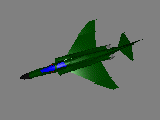 F-4 Phantom 2 VRML by Soji Yamakawa |
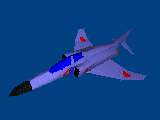 F-4EJ Phantom2 VRML by Soji Yamakawa |
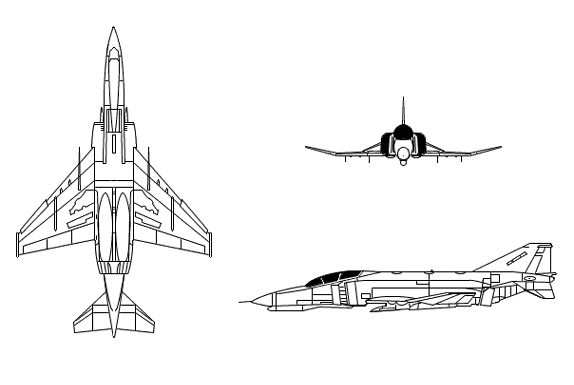
F-4 Phantom II
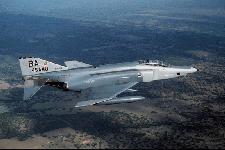
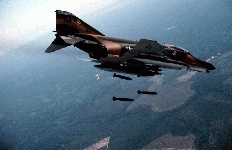
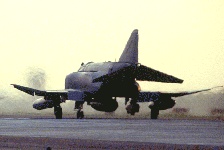
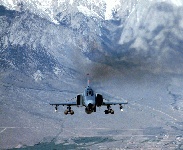
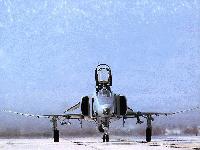


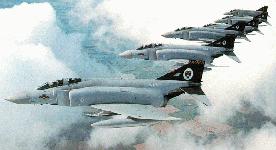
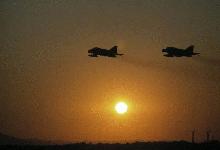
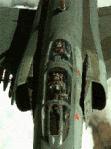
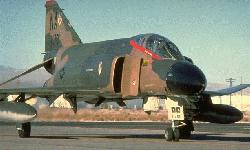
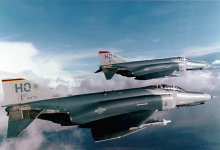
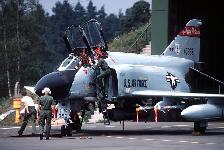

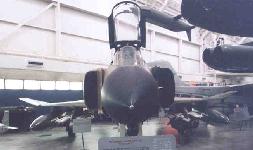
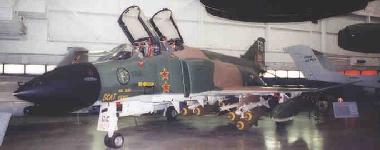

F-4G Advanced Wild Weasel
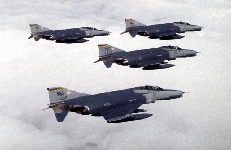
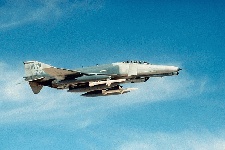
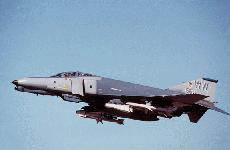

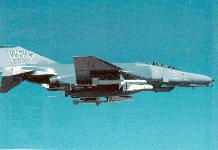
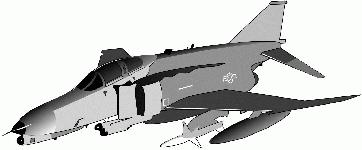
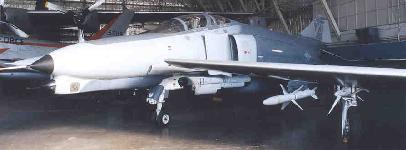






No comments:
Post a Comment